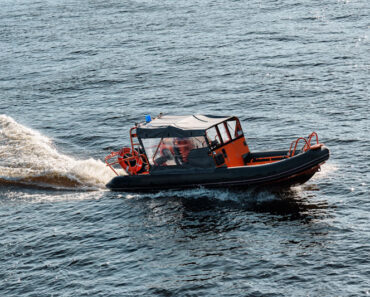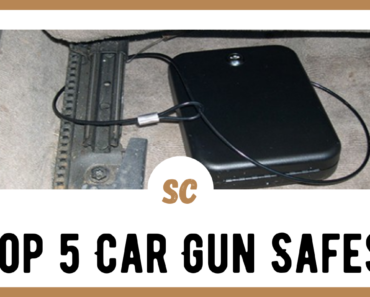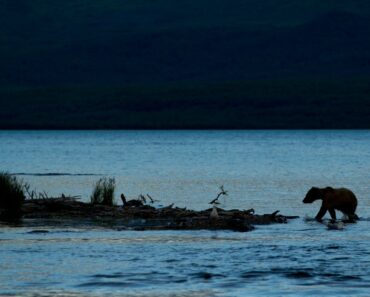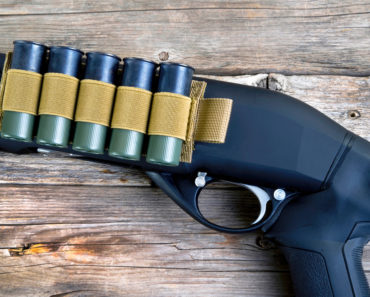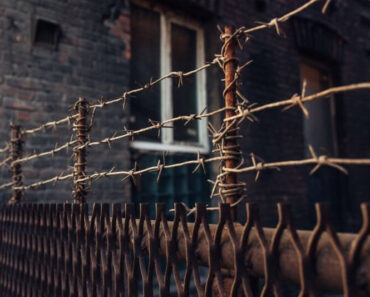A lot of people in the prepping community talk about bugging out, as if “the way” to do it is to head for the wild. By and large, that’s a much more complicated option, than heading for a prepared survival retreat, bugging out to a small, rural town, or even going to visit Aunt Tilde in another town till the disaster is over. Nevertheless, those options won’t work for some of us and bugging out to the wild may be the only realistic option we feel we have.
Bugging out to the wild is probably the most dangerous option we have available to us, although it is the best way to get away from people, if we’re concerned about a breakdown of society, with rampant lawlessness. The problem is surviving in the wild. The solution to that problem, is proper preparation. That’s what I want to talk about here.
The Survival Retreat
The ideal way of bugging out to the wilderness is to own some land and build a survival retreat, the proverbial “cabin in the woods.” Few of us can actually afford this, at least in the way we imagine it in our minds. Buying forested land with a lake or stream on it is expensive; building on that land can be even more so.
There are other ways of looking at this though. It takes some searching, but there is land available, which is known as “junk land,” that can be bought for a couple of thousand dollars per acre. The reason it is so cheap, is that it isn’t useful for anything. It’s too far for anything to be used for commercial or industrial purposes, there’s no reason to build houses there and it’s not suitable for agriculture. The one big problem with it, is that it usually doesn’t have any access to water.
Being remote makes such land attractive as a survival retreat though. The only real issue is overcoming the water problem. That either means putting in a well, which is an expensive proposition or using rainwater capture. If you have sufficient storage, there are few places in the country where there isn’t enough rainfall to survive.
As for a shelter, unless you want to build a log cabin or other shelter, the easiest way to give yourself a shelter on that property is to buy a used travel trailer and set it up there. A lot of hunters do this for “hunting cabins,” and it works out well. Old travel trailers can be purchased inexpensively, if you look around and aren’t all that picky about how pretty it is.
Alternative Shelter
Even the relatively lower cost of buying junk land and putting a used travel trailer on it is outside of many people’s financial reach. I fully understand that and am not suggesting that you do something you can’t afford. I’m merely listing that as an option for those who can. But what if you can’t do that; then what?
There’s a lot of land in this country that is owned by the government. Theoretically, at least, that means it is owned by We the People, although the government doesn’t necessarily act like we do. But in a time of major crisis, where there is a general breakdown of society, I seriously doubt there will be all that many government agents running around national forests, checking to see if anyone is camping without a permit. Even if there is some zealous ranger that doesn’t abandon their post, what’s the worst they can do, make you move?
This possibility is not something we should take lightly. What I mean by that, is that we should not become so wedded to a place, that we can’t pick up and move, if we are forced to. whatever shelter we build should be something we can either pick up and move or that we can afford to abandon, if we have to.
A tent, whether that is a commercial camping tent, one of the heavier-duty walled tents used for “glamping,” a homemade yurt, or an army surplus GP medium squad tent, is the ultimate in portable housing. While they may not be the warmest thing in the wintertime, we must remember that people have survived living in them in some pretty cold weather. The Plains Indians in the US, living in teepees and the Mongolian people living in yurts are two prime examples.
Of course, the more remote a location we pick to set up camp, the less likely we are to be disturbed. That goes for both government officials and anyone who would want to attack us for the purpose of taking whatever we have.
Food in the Wilderness
One of the biggest concerns about bugging out to the wilderness is food. Before we go anywhere with that, you need to come to the realization that you can’t really live off the land, unless you’re in a really remote area with lots of game. While our pioneering ancestors were able to do that, the ratio of people to game was much higher than it is today.
What this means is that your primary food source is going to have to be food that you’ve cached in preparation of bugging out. You might be able to augment that food cache with locally caught fish and game, but the idea is to ensure that you’re going to have food, even if you can’t catch anything.
The question then becomes, where and how to cache your food. There are two basic answers to this: burying it or renting a storage unit. While burying the food cache in five-gallon plastic buckets will allow you to build your cache right where you’re planning on setting up camp, that’s going to be a lot of work. You might want to consider the idea of renting a small storage unit to use as a food cache, even if you are going to cache some food on-site.
Don’t just limit your cache to food. You want to put pretty much everything you’ll need there, so that you don’t have to bring as much with you. Pay particular attention to the tools you’ll need for building a shelter, cutting firewood, making traps for animals, and gardening.
Cache Seed Too
It’s a good idea to add some seed to your cache as well, as that will allow you to start gardening, augmenting the food you have in the cache. Our ancestors started farming because it was more efficient than hunting and gathering. While there may still be things you can gather and hunting is a good way to get some meat, growing fruits and vegetables will provide you with more food for the amount of time invested.
If things are bad enough that you’re bugging out to the wilderness, there’s a good chance that you’re going to be there for a prolonged period of time. No matter how much food you stockpile, there’s a chance that it won’t be enough. Hence, the need to stockpile seed as well.
One of the challenges in growing a garden in such circumstances is keeping birds and animals out of it. There are plenty of squirrels, rabbits, birds and other critters out there who will gladly eat whatever you’re growing. You’ll need to fence in your garden, making fences out of whatever readily-available, natural materials you can find, in order to keep those critters out. Just make sure that the “bars” in your fence are close enough together to keep the critters out.
Self-Sufficiency
Obviously, if you’re going to try and live out in the wilderness, you’re going to have to be self-sufficient. We’re not talking about typical prepping self-sufficiency here; we’re talking full-blown self-sufficiency. More than anything, there won’t be any medical services available to you. You’ll have to be ready to deal with any sickness or injury yourself.
This requires investing considerable time in learning how to deal with those illnesses and injuries. The information is readily available, much of it in YouTube videos. But you need to practice too, not just watch the videos. It’s going to have to become second nature to you, so that you know what to do, without having to stop and think about it, in the event of an emergency.
It would probably be a good idea to learn something about herbal medicine as well, especially herbal medicine that can be done with plants that are growing in the area you’re going to be bugging out to. You can add seeds for herbs to your
Training
Anyone thinking about bugging out to the wilderness has to focus on training. There’s a lot more to surviving in the wild, than there is in bugging in at home. You’re not going to have all the things in your home to work with, so you’re going to have to make a lot for yourself. Not only that, but you’ll have to do it with limited, primitive tools.
Please note that I’m not just talking about training yourself here; but training your family as well. If your survival plan is to do everything for them, not expecting them to pitch in, you’re probably all going to die. There’s a lot involved in survival, especially in a wilderness situation. the more hands you can have working at the tasks that need to be done, the better off you’ll be.
Allow your family members to pick areas that they find interesting and study those. They’ll put much more effort into it and learn it much better, if they find it interesting. A family member who hates gardening probably isn’t the ideal candidate to put in charge of your garden.
Self-Defense
Another big concern out in the wilderness is self-defense. Now, I realize that a big part of the reason for bugging out into the wilderness is to avoid the need to defend ourselves. But what if that doesn’t work? What if others are there too, especially those who would want to attack you and take what you have?
Here we’re faced with the decision of bugging out with just your family or bugging out with a survival team. One of the biggest things a survival team does for us is provide us with more people for mutual defense. However, all those people need places to stay and food to eat; so there’s a cost involved as well.
Granted, the further you get out into the wilderness, the less likely you are to encounter those who will want to take what you have. If you’re 20 or 30 miles from the nearest road, few people are going to want to hike that far, just to see if you have food they can take. But that’s a two-edged sword as well, as it makes it harder for you to get to your vehicles and go to wherever your supply cache is hidden.
One of the most important things you can do, in regards to being ready to defend yourself and your family, is selecting your campsite with defense as a priority. Granted, there are other priorities as well, such as water and firewood; but you can’t forget about having to defend yourself from an attack. Depending on your defensive plan, that can mean limiting avenues of approach, having good lanes of fire, having defensive barriers, such as fallen trees that you can take shelter behind and having a good escape route. Which ones of those you pay the most attention to will have to depend on the defensive plan that you create.



